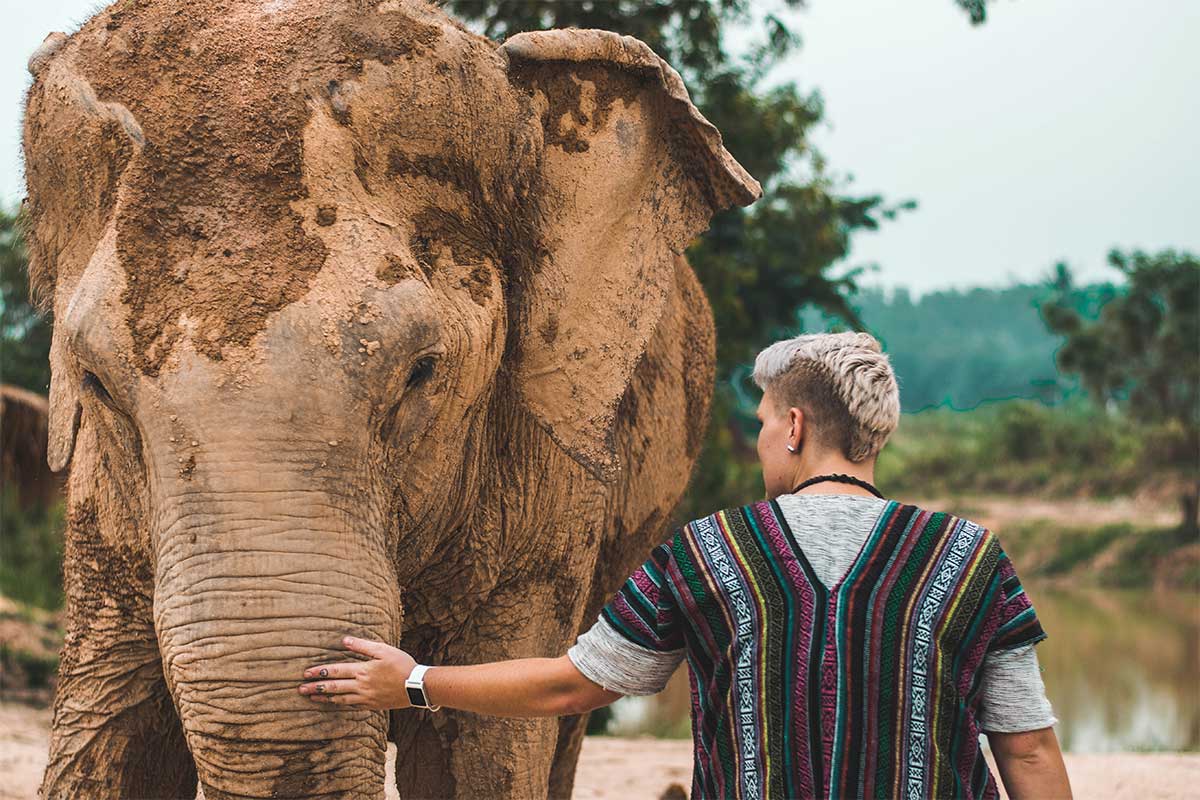Seeing elephants in Thailand while protecting them is possible!
Published on December 17, 2024
Thailand is one of the few countries that still shelters Asian elephants. While the endangered African elephant population is estimated at 400,000 individuals, its Asian cousin numbers only 50,000. The species experienced a huge decline at the beginning of the 20th century with the arrival of modernism in Asia. In Thailand, for example, there were about 100,000 individuals in 1900, but only 13,000 fifty years later. Today, there are only 4,000 elephants in Thailand, half of which live in the wild.
These figures are impressive and lead us to wonder what is causing this considerable decrease. During a trip to Thailand, many tourists wish to have an experience with elephants. It is therefore important to choose your site carefully.
The protection of elephants, everyone's business
We must go back to the origin of elephant domestication, which began more than 5,000 years ago. The bond that unites man and elephant is not new. The strength and intelligence of this animal quickly led to its domestication by humans, who used it in various ways: farm work, transport over difficult terrain, military asset, and even in the world of religion during ceremonies. The indispensability of the animal in daily human life benefited the species. Moreover, since human impact on nature was very limited, animals could thrive in vast wild spaces.
So what caused the incredible drop in numbers in a century?
On the one hand, the reduction of the species' natural habitat, with massive deforestation and human use of these spaces. Regarding the bond between man and animal, machines and industrialization quickly replaced the work of elephants. Even in the military field, armored vehicles quickly replaced what was once an indispensable asset for victory. In short, the animal almost became a nuisance for humans.
So how does this concern you?
After all, if the number of elephants has decreased, it's not your fault. It's simple: with tourism, humans have discovered a new use for pachyderms, turning them into attractions for travelers seeking exoticism.
The excesses of elephant farms in Thailand
Visiting Thailand, or other Southeast Asian countries, is often an opportunity to take elephant-back rides and attend other shows where, for example, the animal paints on a canvas or plays football.
But don't think that it does this for pleasure, because it likes it or out of love for its master. If the animal obeys, it is because there is a whole process of submission that consists of breaking the elephant from a very young age. This is called phajaan.
Hold on tight, here is what it consists of:
How to meet elephants in Thailand without harming them?
As a consumer, you have the power not to finance this trade. Because by riding mistreated elephants, by paying to see shows, you are complicit in these inhumane practices.
Traveling to Thailand therefore means choosing your activities wisely with full knowledge of the facts.

In reaction to these violent and cruel methods, a voice was raised 30 years ago, that of the Thai woman Sangduen. As a little girl, she witnessed the phajaan. The tortured child suffered so much that he screamed, and she asked the mahout to stop. He replied: "No, he doesn't have time to rest, he will rest when he dies."
From then on, she decided that one day she would create a rescue and protection center for these animals. She succeeded in doing so in 1996 with the help of Green Tours. This is how the Elephant Nature Park was born in Chiang Mai. The sanctuary takes in elephants that have been mistreated and victims of mass tourism. They live in an environment as natural as possible, close to what they would have in the wild. Traumatized by the treatment of their former lives as slaves, the vast majority have lost the will to live.
The sanctuary cares for the elephants and helps them recover mentally, where the wounds are deepest. This first sanctuary was an example for the country and even for countries that also have Asian elephants. Rescue centers therefore appeared everywhere.
During a trip to Thailand, ask the local agency Odasie, which shares this vision of respect for animals and the country, to take you to discover the elephants. They send their travelers exclusively to renowned sanctuaries: the Elephant Nature Park in Chiang Mai first and foremost, in the heart of lush nature, but also the Elephant Haven in Kanchanaburi as well as the Pang Nga Elephant Park in the heart of the Phang Nga region, in southern Thailand.
There is still much to say on the subject, but we are not going to write a thesis on this theme, as hard as it is fascinating. It is a subject that is particularly close to our hearts and that we wanted to talk to you about. So, during your tour in Thailand, don't fall into the trap of mass tourism and "animal attraction." Don't think that you can't do anything about this situation, because you represent the positive 'lobby' of consumption. You have the power to change things by supporting just and fundamentally humanist causes.
A website by
Customize your trips with Quotatrip and receive tailor-made offers directly in your inbox.
Discover a country